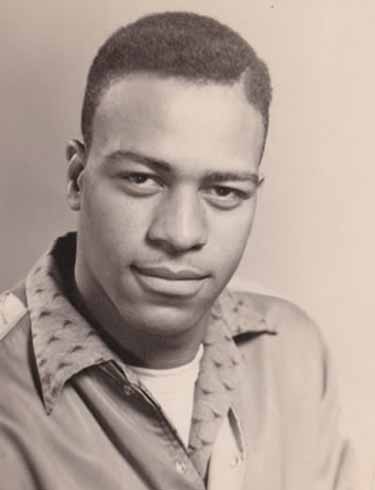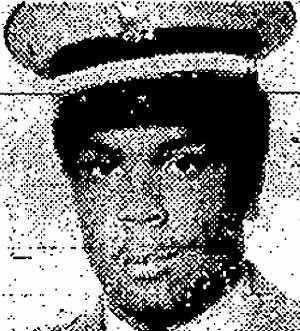Taylor Hancock Jr.
Victim: Herman Anderson, David Martin
Case Summary
Taylor Hancock Jr., who had an extensive history of violence, brutally gunned down security guard Herman Anderson and taxi cab driver David Martin. His crimes netted him a total of $40.00. Hancock was sentenced to death, however a Supreme Court decision in 1978 took him off death row and made him eligible for parole. Hancock was granted parole in 2014, however after opposition from the victims’ families and our organization, that decision was reversed. Hancock remains incarcerated and regularly comes up for parole.
HERMAN ANDERSON’S AND DAVID MARTIN'S STORY
A Very Violent History
By 1974, Taylor Hancock Jr. was no stranger to violence. While living in Virginia, the 22-year-old Hancock had been involved in three violent offenses. In 1969, he was convicted in Richmond, Virginia of robbery, malicious wounding and abduction. After spending two and a half years in prison, he was paroled and, in 1972, was charged with malicious wounding, assault and violating probation. While out awaiting trial, he was charged with unlawful wounding in 1973. Realizing he was facing serious prison time, Hancock left Virginia and came to Columbus, Ohio.

After arriving in Columbus, Hancock immediately continued his violent criminal ways. According to Hancock’s next victim, at 10:30 p.m. on January 20, 1974, the victim picked up a hitchhiker and drove him to Taylor Hancock Jr.’s home. The victim was lured inside the house, and Hancock pointed a rifle at the victim and ordered him to take off his cloths. The men took the victim’s wallet, which contained two dollars. They bound the victim with belts, carried him to the car and threw him into the back seat. They drove around for an hour and then dumped the victim onto the street, along with his pants and jacket. The victim freed himself and immediately went to police.
Police drove to Hancock’s home, where a combative Hancock resisted arrest. Hancock was subdued and charged with aggravated robbery, theft and resisting arrest. Although he was already facing two serious violent offenses in Virginia, the judge decided to release Hancock pending his trial. That decision would cost security guard Herman Anderson and taxi cab driver David Martin their lives.
Two Brutal, Senseless Murders
On June 7, 1974, Herman Anderson, age 38, was working as a security guard at the Rollerland Arena, a popular roller skating rink. At around 10:45 p.m., Mr. Anderson noticed Taylor Hancock Jr. loitering in the roller rink’s parking lot. He told Hancock he needed to either pay the $1.00 admission fee or leave. Hancock went into a rage and told Anderson, “Sucker, I might get you some day.” Hancock left the parking lot and Mr. Anderson went back inside the roller rink. Approximately 30 minutes later, Mr. Anderson was sitting on a chair inside the Rollerland Arena entrance with his feet propped up on a table when Hancock returned armed with a rifle. Hancock stood in the roller rink’s doorway and shot Mr. Anderson in the chest.
Cab driver David Martin was driving by the Rollerland Arena when he was confronted by a fleeing Taylor Hancock Jr. Hancock forced his way into the cab and told Mr. Martin to drive away. Hancock told Mr. Martin to turn into an alley. He then shot David Martin in the back of the head, killing him instantly. He stole $40.00 from Mr. Martin and fled the scene.
Police arrived at both scenes and originally thought the two crimes were unrelated to one another. After talking to witnesses and learning the same gun was used in both crimes, they immediately began looking for Taylor Hancock Jr. It was believed Hancock had either fled back to Virginia or Detroit, where he had relatives. After an 11-day nationwide manhunt, Hancock was found hiding out in Virginia and was arrested . He unsuccessfully fought extradition and was returned to Columbus on August 1, 1974, and was charged with two counts of aggravated murder.
Guilty And Sentenced To Death
Hancock was indicted for two counts of aggravated murder with death penalty specifications. A security guard who was working with Mr. Anderson testified about the argument between Mr. Anderson and Hancock. A 17-year-old girl, who was at the roller rink that night, pointed to Taylor Hancock Jr. in court and told jurors she saw Hancock shoot Mr. Anderson.
Hancock took the stand is his own defense. He claimed that he and his girlfriend left the roller rink and were at her house when the murders occurred. He said he went to Virginia, where his mother lives, to look for work.
It took the jurors two days to find Hancock guilty of both murders. Two psychiatrists examined Hancock and found him sane and responsible for his actions. They could find no reason why he should not be executed.

Judge Charles R. Petree sentenced Taylor Hancock Jr. to die in the electric chair. Once again, Hancock lost all control. He shouted at Judge Petree, “If there is a way to come back after death, then I’ll come back to
remind you of the injustice being enacted on me.” Hancock continued, “You’re an old man judge, an old man who is wrong.” Hancock then lunged towards Assistant Prosecutor John Salimbene. He had to be wrestled to the floor by sheriff’s deputies and put in a holding cell.
After the hearing, Hancock was not done venting his anger. His out-of-control rage continued at 11:00 p.m. that evening, when he flooded his maximum security cell at the Franklin Count Jail. When sheriff’s deputies opened the cell door, Hancock attacked them. Both deputies had to be treated at the hospital. One deputy required four stitches to close a wound over his right eye, and the other suffered a broken nose and facial cuts.
Hancock was taken off death row in 1978 after The Supreme Court of the State of Ohio, after considering the judgment of the Supreme Court of the United States in the cases of Lockett v. Ohio and Bell v. Ohio, modified that all Ohio death sentences be commuted to life imprisonment with the opportunity for parole. He now is eligible for parole.
From Death Row To Possible Parole
Hancock’s available parole documents indicate no serious infractions, however there is serious doubt as to whether Hancock has true remorse for his crimes and accepts responsibility for his actions. In 2004, the records state, “Inmate accepts no responsibility for his actions.” Then, in 2009, Hancock all of a sudden changed his tune. The record states, “The offender admits to the crime and expresses sincere remorse.” In 2014, the record states, “The offender takes responsibility for this offense, utilizing insight and remorse.” We find it very concerning that, for 30 years, Hancock took absolutely no responsibility for his actions and expressed no remorse and then, when parole became a viable option, he made this complete turnaround.
Taylor Hancock Jr. was granted parole in August 2014, however no one notified David Miller’s family. We located the families of both David Miller and Herman Anderson, who opposed the parole. Based on their testimony and public opposition through petitions on our website, the Ohio Parole Board reversed their decision to parole Taylor Hancock Jr., and he remains in prison.
No Parole
Taylor Hancock Jr. is a habitual violent felon who brutally murdered two completely innocent victims while awaiting trial for several other violent crimes. Hancock was sentenced to death for his vicious crimes and is only alive today due to a U.S. Supreme Court decision.
Releasing Taylor Hancock Jr. at any point would be a complete injustice to Herman Anderson and David Martin as well as to their families. In addition, Taylor Hancock’s long violent history clearly demonstrates that releasing him would pose an immeasurable risk to public safety. Due to the fact Hancock should have been executed 40 years ago, we believe, at the very minimum, he should spend the rest of his natural life in prison.
To further the interests of justice and to protect society, we urge The Ohio Parole Board to reverse their decision to parole Taylor Hancock Jr. and give him the maximum continuance at all future parole hearings.
Contact Us
Looking to add a name to our list, or provide additional information on one of our cases? Please contact us at Block Parole now!